I'm working on a basic model to identify the e-ink display of my DGT Centaur chess board.
Most of the labels for the bounding boxes that identify the display read "N/A". There are a few instances where the bounding box uses the "display" label, but it's when I recognizes part of my body in the image.
I'm assuming there is an incorrect configuration with my labels, but I'm not sure how to debug. See my labelmap.pbtxt below, as well as my training configuration.
Thank you for any help!
Example images:
My body labeled with "display":
My body labled with "display," the board/display labeled "N/A":
Display labeled with "N/A":
labelmap.pbtxt
item {
id: 1
name: 'display'
display_name: 'display'
}
faster_rcnn_inception_v2_pets.config
# Faster R-CNN with Inception v2, configured for Oxford-IIIT Pets Dataset.
# Users should configure the fine_tune_checkpoint field in the train config as
# well as the label_map_path and input_path fields in the train_input_reader and
# eval_input_reader. Search for "PATH_TO_BE_CONFIGURED" to find the fields that
# should be configured.
model {
faster_rcnn {
num_classes: 1
image_resizer {
keep_aspect_ratio_resizer {
min_dimension: 600
max_dimension: 1024
}
}
feature_extractor {
type: 'faster_rcnn_inception_v2'
first_stage_features_stride: 16
}
first_stage_anchor_generator {
grid_anchor_generator {
scales: [0.25, 0.5, 1.0, 2.0]
aspect_ratios: [0.5, 1.0, 2.0]
height_stride: 16
width_stride: 16
}
}
first_stage_box_predictor_conv_hyperparams {
op: CONV
regularizer {
l2_regularizer {
weight: 0.0
}
}
initializer {
truncated_normal_initializer {
stddev: 0.01
}
}
}
first_stage_nms_score_threshold: 0.0
first_stage_nms_iou_threshold: 0.7
first_stage_max_proposals: 300
first_stage_localization_loss_weight: 2.0
first_stage_objectness_loss_weight: 1.0
initial_crop_size: 14
maxpool_kernel_size: 2
maxpool_stride: 2
second_stage_box_predictor {
mask_rcnn_box_predictor {
use_dropout: false
dropout_keep_probability: 1.0
fc_hyperparams {
op: FC
regularizer {
l2_regularizer {
weight: 0.0
}
}
initializer {
variance_scaling_initializer {
factor: 1.0
uniform: true
mode: FAN_AVG
}
}
}
}
}
second_stage_post_processing {
batch_non_max_suppression {
score_threshold: 0.0
iou_threshold: 0.6
max_detections_per_class: 100
max_total_detections: 300
}
score_converter: SOFTMAX
}
second_stage_localization_loss_weight: 2.0
second_stage_classification_loss_weight: 1.0
}
}
train_config: {
batch_size: 1
optimizer {
momentum_optimizer: {
learning_rate: {
manual_step_learning_rate {
initial_learning_rate: 0.0002
schedule {
step: 900000
learning_rate: .00002
}
schedule {
step: 1200000
learning_rate: .000002
}
}
}
momentum_optimizer_value: 0.9
}
use_moving_average: false
}
gradient_clipping_by_norm: 10.0
fine_tune_checkpoint: "/Users/cs/GitHub/dgt-centaur-transcriber/models/research/object_detection/faster_rcnn_inception_v2_coco_2018_01_28/model.ckpt"
from_detection_checkpoint: true
load_all_detection_checkpoint_vars: true
# Note: The below line limits the training process to 200K steps, which we
# empirically found to be sufficient enough to train the pets dataset. This
# effectively bypasses the learning rate schedule (the learning rate will
# never decay). Remove the below line to train indefinitely.
num_steps: 200000
data_augmentation_options {
random_horizontal_flip {
}
}
}
train_input_reader: {
tf_record_input_reader {
input_path: "/Users/cs/GitHub/dgt-centaur-transcriber/models/research/object_detection/train.record"
}
label_map_path: "/Users/cs/GitHub/dgt-centaur-transcriber/models/research/object_detection/training/labelmap.pbtxt"
}
eval_config: {
metrics_set: "coco_detection_metrics"
num_examples: 1
}
eval_input_reader: {
tf_record_input_reader {
input_path: "/Users/cs/GitHub/dgt-centaur-transcriber/models/research/object_detection/test.record"
}
label_map_path: "/Users/cs/GitHub/dgt-centaur-transcriber/models/research/object_detection/training/labelmap.pbtxt"
shuffle: true
num_readers: 1
}


